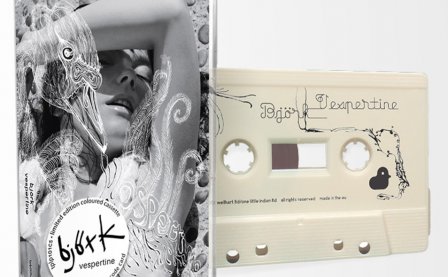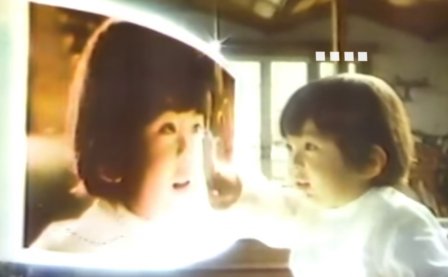I’m not sure which is more insulting: calling Steve Jobs a “folk hero” or describing Apple technology as an “aesthetic.” The press has been belching out these two terms with such mind-numbing regularity over the past five days that they’ve actually come to resemble one of Jobs’ own advertising campaigns. And I’m talking about the “left” press here; both NPR and The Huffington Post quickly buried their coverage of the Wall Street demonstrations in order to carry “news items” (i.e., “ads”) about Jobs’ “heroic” career as the CEO of Apple and the “artistry” of his corporate vision. (Only Forbes had the balls to call him a “jerk.”)
The term “folk hero” is stupid enough. Call Jobs an “innovator,” call him a “genius,” but, at this point in time, you simply can’t whitewash barbaric working conditions in southern China and $7 billion in the bank with the phrase “folk hero.” Indeed, anyone who has lived in America since, say, the invention of the Macintosh 128K (and I’m being generous here) knows that popular culture no longer functions in this way. And nobody but a Yale School of Management professor would be incredibly dick-headed enough to imagine anything like a traditional “folk” being able to afford the techno-glamorous lifestyle sold by Jobs and co.
As far as ‚Äúaesthetic‚Äù goes, I think it‚Äôs fair to say that Apple gives good design — revolutionary design, even — but all those sleek lines and glowing screens are developed wholly in the service of manipulating and sustaining a market. I know aesthetics everywhere overlap with the forms of everyday life, even commercial forms, but ‚Äúdesign‚Äù is often just a pleasing way of moving consumer bodies. Call me a snob, but I‚Äôd like to reserve the term ‚Äúart‚Äù for something more critical, a bit more transgressive. An inventor — like Jobs, like Edison or Ford — creates a new medium, but an artist is someone who fucks with it. Jobs transformed our culture, but only to lock it up again. The artist inspires us to change it again and again.
This may be where Björk comes in with Biophilia, her “first app album,” produced in conjunction with Apple. Biophilia is not supposed to be your average “newspaper album,” but a cosmic event, one that uses Apple technology to harness the forces of creation. Here, the iPad, or, rather, its touchscreen technology, comes to function like some postmodern Book of the Dead, capable of unlocking the secrets of the universe and setting them into vibrant, creative motion. Björk, in fact, had been working on the album for some time, but decided to compose the songs on her touchscreen after consulting with computer scientists, astrophysicists, molecular biologists, and instrument makers, and, ultimately, that same technology will become the focus of her live show and a set of apps designed for each song. But the iPad is just one part of the Biophilia experience, which consists of not just music, but a series of internet sites, museum visits, installations, educational programs, and live shows. And, with the “Ultimate Edition,” the well-to-do fan can get a second CD of exclusive recordings, a Biophilia manual, photographs, a set of lyrics and scores, a wooden box with 10 chromed tuning forks (each set to the tone of a different Biophilia track), and maybe even a Prius.
All this rather unwieldy technology will presumably propel the artist and her fans back into the simplicity and spontaneity of nature itself. Apparently, with the iPad, technological alienation has reached its apogee and stands poised to break through to the other side, restoring us all to a state of creative purity. In a set of rather hazy metaphors: technology mimics nature mimics sound mimics technology… and so on and so on. All three spheres come together in a pre-human/post-human vision of natural history that‚Äôs as old as the Greeks and as new as, say, Carl Sagan. I guess it all sounds better in Bj√∂rk‚Äôs voice. As she puts it, the album‚Äôs about ‚Äúzooming out, like the planets, but also zooming into the atoms. And in that way, aesthetically sympathizing with sound, and how notes in a room behave…. it‚Äôs kind of more similar to how planets and microscopic things work.‚Äù Bloop, bloop, bleep, bleep, point, click, expand — hey, check out the pretty crystals growing out of my iPad!
Yeah, whatever, you‚Äôre probably saying, what about the music, dude? I hear you — it took me awhile to find it myself. I can assure you, though, once you get past all this high-flyin‚Äô technophilia, or just accept it as a set of goofy metaphors, the album blasts into the atmosphere. As a musical experience, Biophilia is nothing less than cosmic, astounding in its size and scale, full of deep space, vast constellations, and dark attractors. ‚ÄúMoon,‚Äù for example, begins with a stark set of descending chimes, a pattern that seems both archaic and celestial; it‚Äôs the perfect setting for Bj√∂rk‚Äôs remarkably fluid vocal line, which, in its ritual repetition, slowly mutates into a soaring angelic choir. On ‚ÄúThunderbolt,‚Äù a dark organ sets the mood; pulsing from beneath the ground, it seems to set the entire universe to its own wave-length, throbbing louder and louder, until the whole heavy mobile falls apart, collapsing in its own wobbly orbit. These songs come across as both subhuman and sublime, full of intimate cellular play and the vast forces of chaos. At times, you feel as if you‚Äôre behind a microscope, peering in at some bit of sonic DNA, and others, you feel like a lost cosmonaut, drifting breathlessly through space. The iPad must have been essential to producing the digital bleeps and skittering synth lines that streak through each track, as well as the strange algorhythmic shifts in timbre and rhythm. And yet the natural wonder of the music occurs above and beyond its technological mediation. I haven‚Äôt been this awed by a scientific spectacle since a sixth-grade class trip to the Hayden planetarium, but even then I was more impressed by the artistry of the event than its actual content. There‚Äôs something here that has nothing to do with the iPad, with molecular physics or cosmology, something simply musical, something simply stylish — Bj√∂rk herself as both artistic genius and natural wonder.
But there‚Äôs also something sexy and downright kinky about Biophilia. Bj√∂rk originally (mis)interpreted the word of the title to mean something like ‚Äúfeeling up nature.‚Äù At heart, the album is a set of desperate love songs, with nature — both sublime and maternal — standing in for a fickle lover. The human ego appears as an obstacle to some more cosmic sense of being and belonging, and everywhere the violence of nature precedes the violent pleasure of creation. ‚ÄúBest way to start-anew,‚Äù Bj√∂rk sings on the first track, ‚Äúis to fail miserably/ Fail at loving/ And fail at giving/ Fail at creating a flow/ Then realign the whole/ And kick into the starthole.‚Äù But what‚Äôs most remarkable about the album is that Bj√∂rk enacts this process through sound. The gameleste chimes on ‚ÄúCrystalline‚Äù seem to be expanding in three dimensions, creating a beautiful fractal pattern until, louder and louder, they shatter all over again in a drill-and-drum freak-out. Here, as throughout the album, Bj√∂rk presides over natural wonder like both a disaffected scientist and a priestess at the original Eleusinian Mysteries. The lab technician everywhere overlaps with the sexy celestial muse until her voice becomes a medium for creative process itself, building each song, bit by bit, and then releasing it into space to spin on its own. In ‚ÄúCosmogony‚Äù (so good it‚Äôs scary), Bj√∂rk‚Äôs voice seems not so much describing the origins of the universe, but setting new planets into soft motion, sculpting each one in her mouth before reeling it out into the ether. On ‚ÄúMutual Core,‚Äù backed by organ and rumbling synth lines, her voice is full of angry force, singing about distance and magnetic strife, until finally, it sets off a series of explosive breakbeats and seems to be moving the continents. To borrow from Andrew Marvell (and Bj√∂rk has never before appeared so damn 17th century), on tracks like these, Bj√∂rk seems to have rolled science, nature, and sound into one metaphysical ball and rolled it right through the gates of life.
So perhaps Biophilia the ‚Äúapp album‚Äù comes across like a pretentious distraction, while Biophilia the ‚ÄúBj√∂rk album‚Äù stands with the best of them. Other musicians (Eno, Flying Lotus, etc.) have released far more intriguing apps for their music, but no one has really tried to re-imagine song itself as a kind of app, a little sonic tool to accomplish some natural or scientific task. In fact, a song may be more like an app than any other object in our cultural environment. It is less something to be owned or even held than a set of functions or protocols used — via multi-touch gestures — to work over other materials: instruments, bodies, cars, political movements, economies, etc. But the apps designed for Biophilia come across like silly little games — redundant, distracting, infantilizing (they remind of the kind of toys that now come with children‚Äôs books, as if children can‚Äôt be bothered with books alone). Like all Apple technology, they are designed to keep you attached to Apple technology, and, if anything, they demonstrate the sheer finality of the interface. The most interesting one was designed for the song ‚ÄúVirus.‚Äù Here, the user is supposed to help protect a set of cuddly pink cells from an invasive virus, but success means the end of the song; ‚Äúhealth‚Äù is tantamount to the death of art. It‚Äôs a neat trick, but Bj√∂rk‚Äôs commentary on contagion and symbiosis is already at work in the song itself, particularly as a form of ‚Äúgenerative music.‚Äù It‚Äôs even more interesting to think of song itself as a kind of cultural virus, particularly when a song as initially invasive as this one becomes a source of pleasure and comfort.
Simply put, Apple is way too protective, way too paranoid, to allow anything like art to occur within its operating system, and Bj√∂rk is way too big to really mess with its protocols. But Bj√∂rk‚Äôs actual career shows us, again and again, that music itself is an incredibly flexible technology. Her voice alone is perhaps the best medium for channeling the cosmos, weaving and unweaving its unseen forces into bright sonic patterns. In this, moreover, her art seems incredibly ancient as well as futuristic, and thus more dynamic than all the fantastic instruments upon which it is composed. Biophilia — with its minimalist patterns, flattened scales, and pre-modern gamut — recalls the musical traditions of Indonesia and Japan. But it also, in its creative remodeling of the interface between performer and song, draws heavily from the work of Cage and Reich. But then, again, in both sound and image, Bj√∂rk‚Äôs latest incarnation brings to mind the spectacle of Ziggy Stardust himself (check out that wig!). At once earthy and alien, kinky and holy, she comes from outer space on a moonbeam and plays the ‚Äúwild mutation as a rock and roll star‚Äù — no iPad necessary. Indeed, with Biophilia, Bj√∂rk is doing nothing less than rebuilding the human body itself as a music-making machine, and in this she‚Äôs just like every other brilliant pop artist. On the cover of the album, she appears as cosmic earth-goddess, literally exploding with the elements — fire, dark matter, metallic ore. And yet there are instruments embedded in her body, as if the very architecture of her corpus combines the natural, the musical, and the technological. The image speaks beautifully about the sound of the album; it says more than all the other technology combined about the genius of her craft, and perhaps, in its own post-human vision, sets a higher bar for any future thoughts about either ‚Äúfolk heroes‚Äù or ‚Äúaesthetics.‚Äù
More about: Bjork




